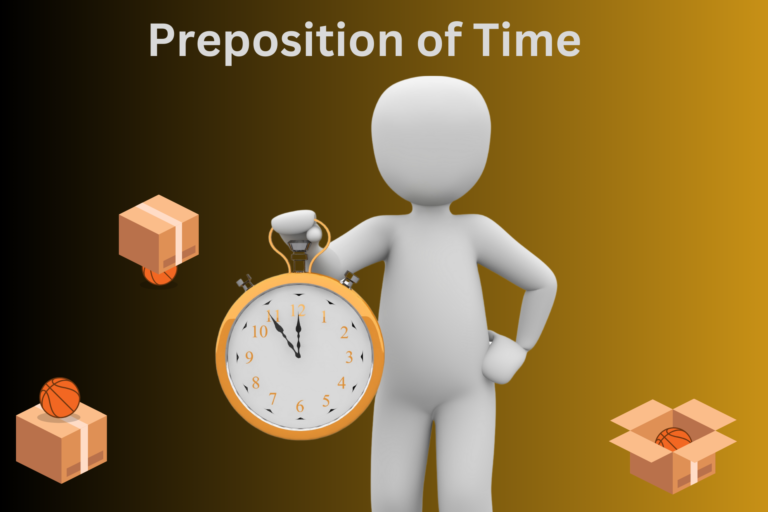Language learners often struggle with prepositions of time, essential for expressing when events occur. Prepositions of time help clarify moments, days, or durations in sentences, making communication clearer and more precise. Mastering them ensures fluency and prevents common mistakes in writing and speech.
What Are Prepositions and Prepositions of Time?
A preposition is a word that links a noun or pronoun to another element in a sentence, showing relationships in time, place, direction, or manner. Prepositions of time specifically indicate when something happens.
Prepositions of time include words like at, on, and in, which define different timeframes. These prepositions follow clear rules that dictate their correct usage. Understanding them makes it easier to avoid mistakes and speak naturally.
When to Use At
The preposition at is used when referring to a specific point in time, including exact hours, precise moments, or short events. It works for:
- Clock times: at 5 PM
- Specific moments: at sunrise
- Festivals or holidays (without “day”): at Christmas
- Meal times: at lunch
- Certain fixed expressions: at the weekend (British English)
Examples of ‘At’ in Sentences:
- The train arrives at 8:30 AM.
- We met at midnight for a surprise party.
- She loves spending time with her family at Christmas.
- Let’s have coffee at noon.
- The movie starts at 7 o’clock.
- He usually sleeps at night.
- I am having a meeting at 10 AM.
- I felt happiest at that moment.
- The kids were sleeping at the same time.
- I always wake up at dawn.
When to Use On
The preposition on is used for specific days and dates. It applies to:
- Days of the week: on Monday
- Specific dates: on June 15th
- Special days: on New Year’s Eve
- Specific occasions: on my birthday
- Expressions with “day”: on Christmas Day
Examples of ‘On’ in Sentences:
- I have a meeting on Friday.
- She was born on July 4th.
- They got engaged on Valentine’s Day.
- The exam is on Monday morning.
- We moved into our house on the first of March.
- The parade happens on Independence Day.
- He left school on the last day of term.
- My interview is on Thursday afternoon.
- They visited me on my wedding anniversary.
- The concert is on New Year’s Eve.
When to Use In
The preposition in is used for longer periods, such as months, years, centuries, and general timeframes. It applies to:
- Months: in October
- Years: in 2020
- Centuries: in the 21st century
- Long periods: in the summer
- Future expressions: in two weeks
Examples of ‘In’ in Sentences:
- We moved to London in 2019.
- The flowers bloom in April.
- The Renaissance happened in the 15th century.
- He was born in the 1990s.
- I will call you in an hour.
- She takes a vacation in December.
- The company was founded in the 18th century.
- I started my studies in January.
- We expect delivery in three weeks.
- The team performs better in the winter.
Common Mistakes and How to Avoid Them
- Using “at” instead of “on” – Incorrect: I have a meeting at Monday. Correct: I have a meeting on Monday.
- Using “on” instead of “in” – Incorrect: She was born on 1990. Correct: She was born in 1990.
- Using “in” instead of “at” – Incorrect: The train arrives in 6 PM. Correct: The train arrives at 6 PM.
Quick Summary for Easy Reference
- At → specific times (at 7 AM, at noon, at sunset)
- On → specific days and dates (on Monday, on my birthday, on June 15th)
- In → longer periods (in March, in 2024, in winter)
Why Mastering Prepositions of Time Matters
Using prepositions of time correctly improves clarity in communication, making conversations and writing sound more natural. Since these prepositions follow fixed rules, learning them simplifies grammar and reduces errors. Regular practice will help learners use prepositions of time effortlessly.
Now that you know when to use at, on, and in, you can confidently structure sentences without confusion. Keep practising and applying these rules, and soon, using prepositions of time will become second nature!
Click below to learn more about how to reach your goal with English learning.
https://fluent-eng.com/punctuation-marks-and-their-usage/

